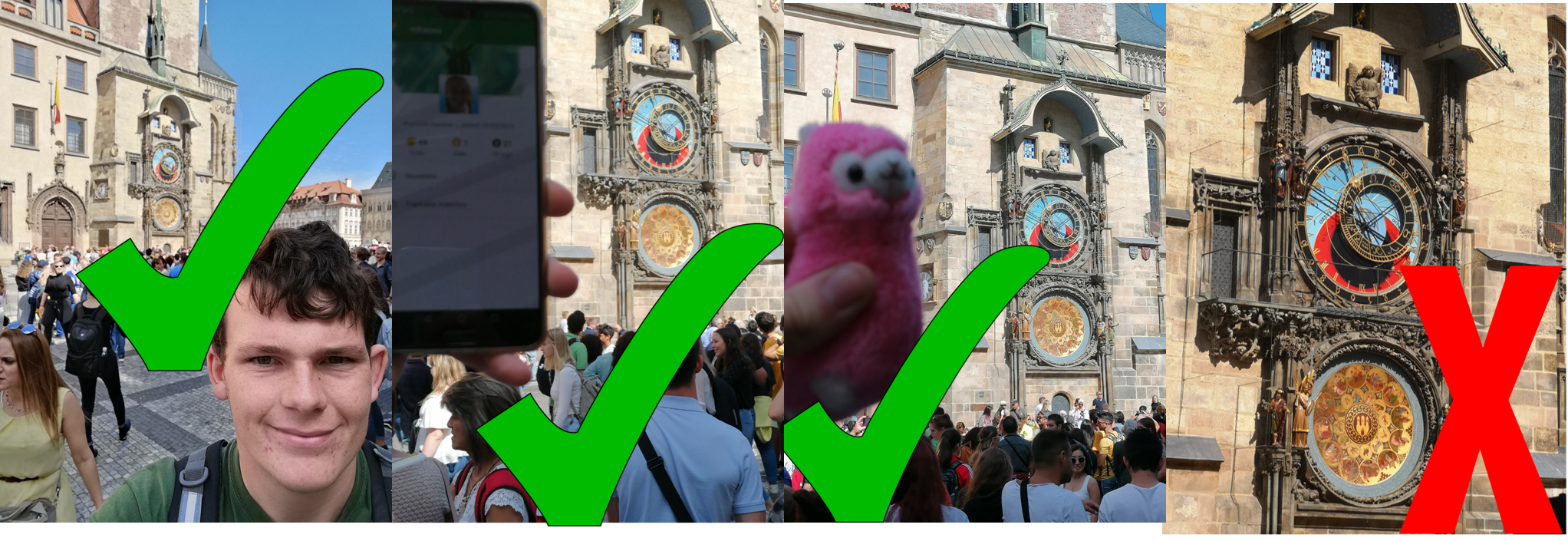Prague’s Astronomical Clock
Pražský orloj


Světově proslulý pražský orloj je nejstarší svého druhu na světě. Byl nainstalován na dnešní Staroměstskou radnici v roce 1410 a mimo jiné obsahuje i astroláb, který sleduje polohu slunce, hvězd a měsíce.
Kromě toho měří orloj čtyři různé druhy času - středoevropský čas (časové pásmo pozorované v Praze), hvězdný čas (založený na pohybu hvězd), stejně jako český čas (začínající při západu slunce) a babylonský čas (východ slunce a západ slunce, odlišné po celý rok). Tvrdí se, že se jedná o jediné hodiny, které jsou schopny zobrazit babylonský čas, který je v každém ročním období jiný.
Každou hodinu se na orloji po zazvonění objevují postavy. Jedná se o sochy dvanácti apoštolů, z nichž každý drží nějaký předmět. V průběhu představení se hýbou i ostatní postavy vnějším plášti orloje (Smrtka, Lakomec, Marnivec, Turek).
Umístění
Možnost umístit tuto keš jesem získal v rámci vydání Virtual Reward 2.0. Poté, co jsem se zúčastnil svého prvního megaeventu ve Velké Británii (UK Mega 2018 - Yorkshire), jsem se nemohl dočkat další takové akce. Brzy jsem si všiml megaeventu nějakých 1000 km od domova s tématem astronomie ... ale určitě jsem neměl čas a peníze, abych se tam dostal.
O mnoho měsíců později a o pár dní dříve se mi podařilo dokončit přípravu této keše. Cestuji s novou kačerkou Mkaoss, který provedl téměř veškerý výzkum této keše (děkuji!) a doufám, že se podaří publikovat tuto keš v rámci našeho eventu 2. září.
Cache
Pro zalogování této keše je potřeba pořídit fotografii sebe nebo své GPS / něčeho, co poznáte s ciferníkem orloje (a pokud možno včetně viditelného času). Všechny logy bez doprovodných fotografií budou smazány.

Prague’s Astronomical Clock is world famous for being the oldest of its kind on the planet. It was installed in 1410 onto what is now the Old Town Hall, and has multiple features including an astrolabe, which tracks the position of the sun, stars and moon.
Alongside this, the Astronomical Clock measures four different kinds of time — Central European time (the timezone observed in Prague), Star time (based on the movement of the stars), as well as Bohemian time (beginning at sunset) and Babylonian time (sunrise to sunset, different across the year). It is thought to be the only clock capable of tracking Babylonian time, as it differs across seasons.
Every hour, the Astronomical Clock displays different figures as it chimes. Statues of the Twelve Apostles are shown, each holding different items, while representations of 15th century social fears (Vanity, Greed, Death, Invasion [or lust according to wikipedia?]) shake their heads.
The placing
This cache was awarded to me as part of the Virtual Reward 2.0 release. After attending my first Mega cache in the UK (UK Mega 2018 - Yorkshire) I was hooked and couldn’t wait to attend my next major caching event. Soon after I spotted a Mega event just over 1000km away from home with a huge astronomical theme… but surely I didn’t have the time and money to get there.
Many months down the line and It’s just a few days before & this cache is almost finished. I am taking the trip with new cacher Mkaoss who has done almost all of the research for this cache (thank you!) and will be hopefully releasing this cache as part of an event we are hosting on the 2nd of September!
The Cache
To claim the find on this cache, all you need to do is to take a photograph of yourself or your GPS/Something you can be recognised by, with the clock face (and preferably time) in view of the image. Any logs without valid images as above (in 7 days) will be deleted.
All the best, Mkaoss & Timelord442!
Special thanks to Nellas of Doriath for help with the Czech translation :)

Virtual Rewards 2.0 - 2019/2020
This Virtual Cache is part of a limited release of Virtuals created between June 4, 2019 and June 4, 2020. Only 4,000 cache owners were given the opportunity to hide a Virtual Cache. Learn more about Virtual Rewards 2.0 on the Geocaching Blog.